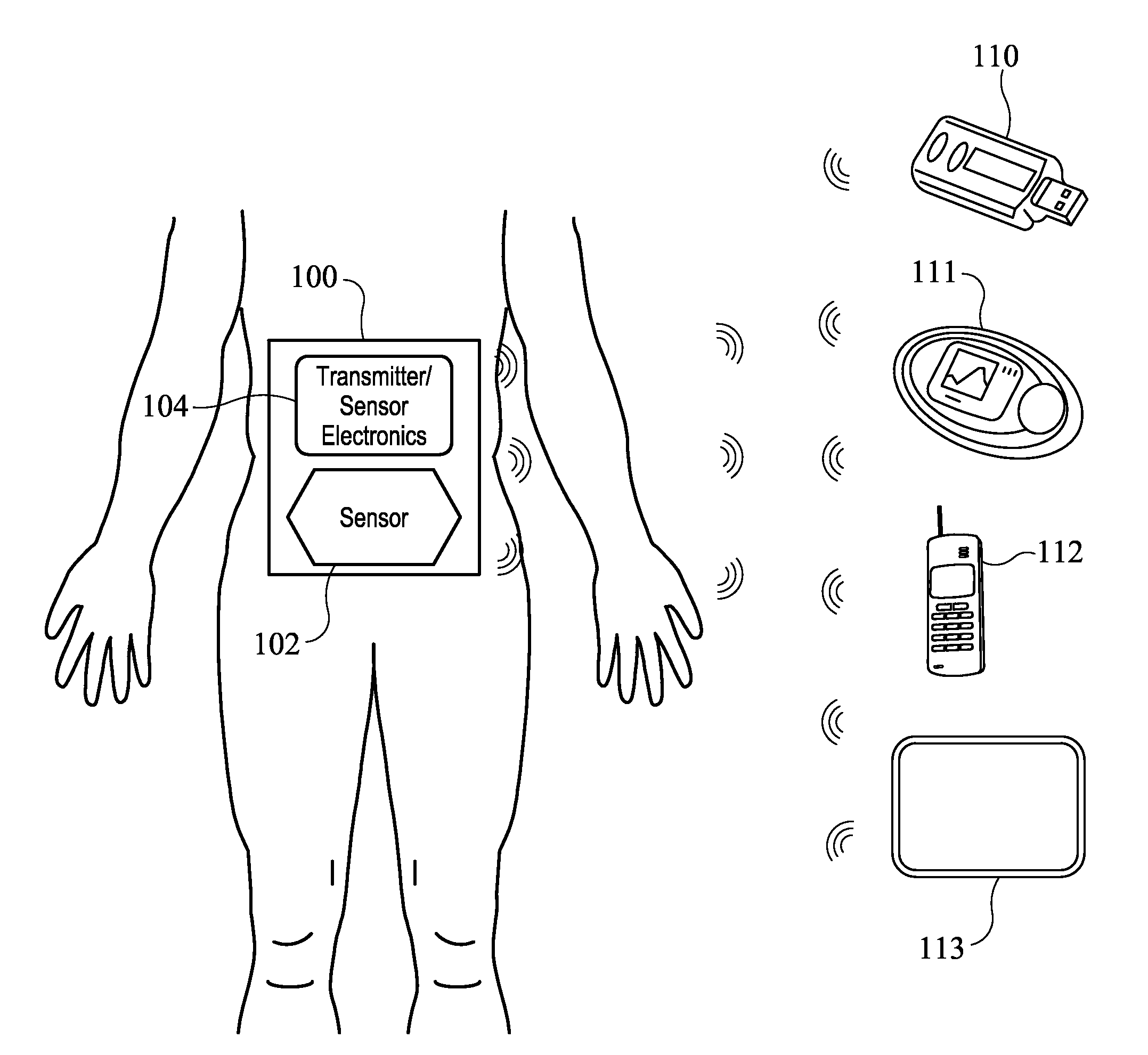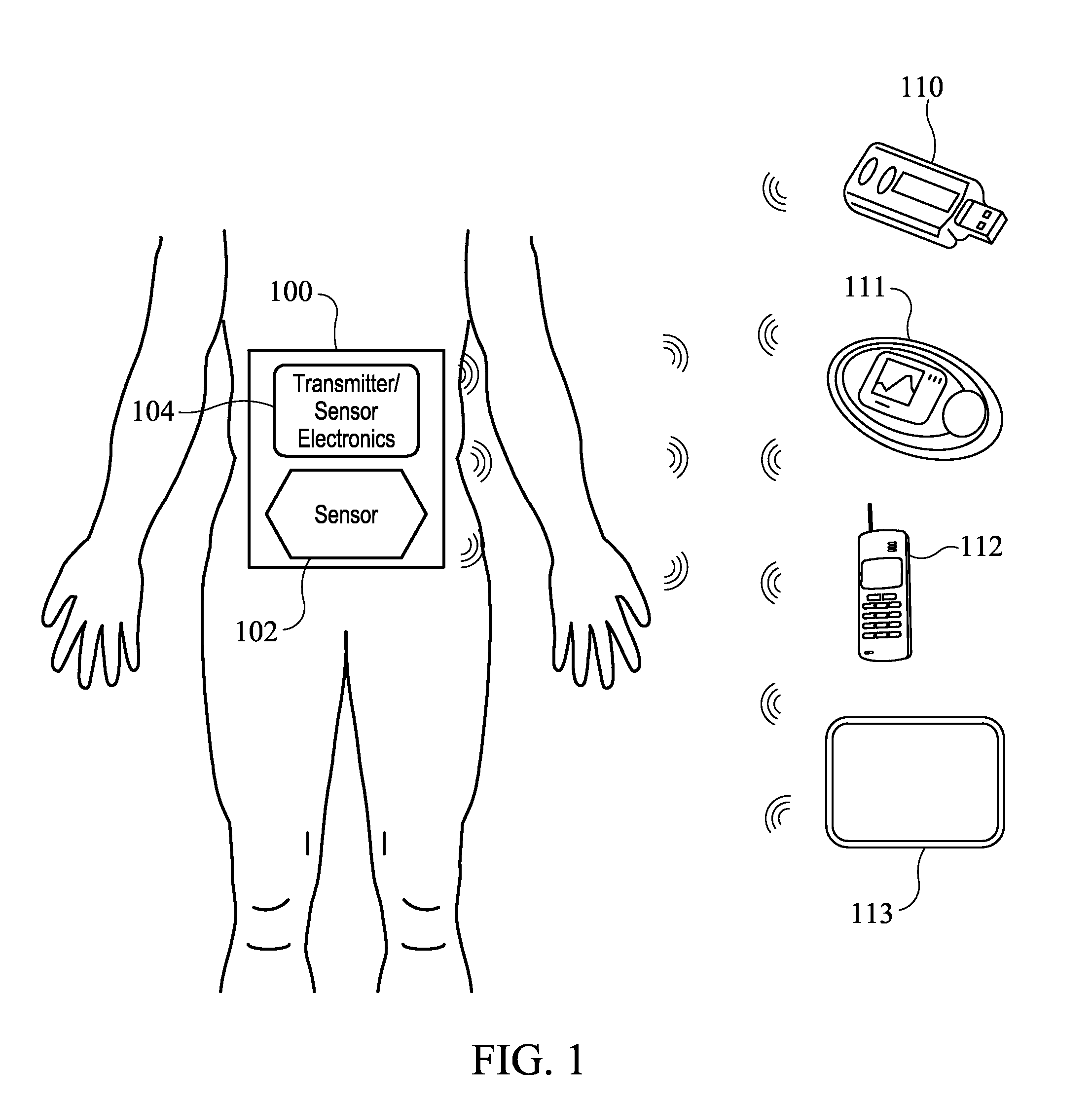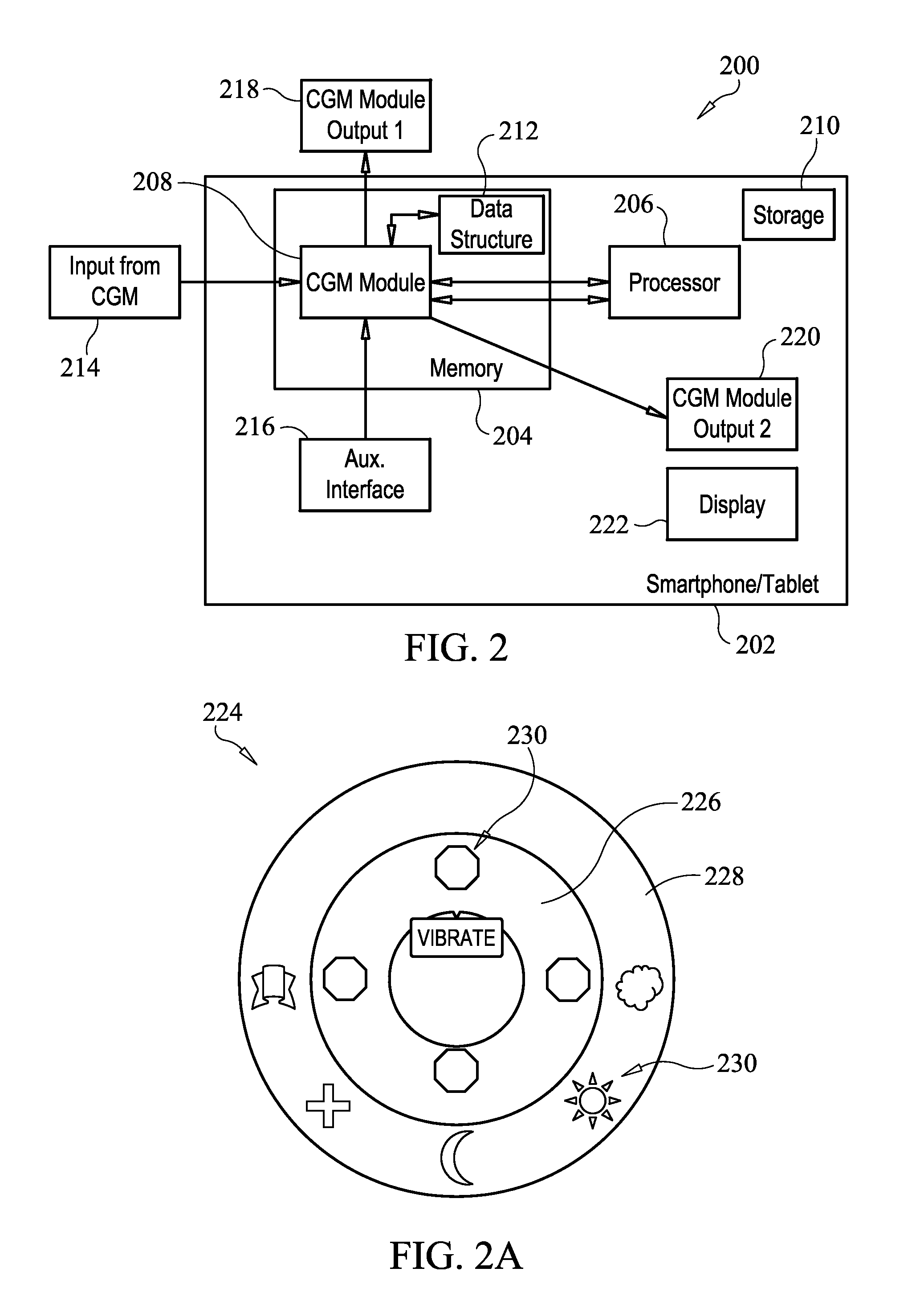Systems and methods for leveraging smartphone features in continuous glucose monitoring
a technology of continuous glucose monitoring and smartphone features, applied in the field can solve the problems of not knowing if the blood glucose value is going up (higher), affecting the accuracy of continuous glucose monitoring, so as to achieve a stronger alarm
- Summary
- Abstract
- Description
- Claims
- Application Information
AI Technical Summary
Benefits of technology
Problems solved by technology
Method used
Image
Examples
example 1
[0242]a user wants to know the impact on their future glucose levels and glucose trend graph if they take an action or based on an action the user has already taken. If a user's glucose is 150 mg / dL and rising about 2 mg / dL / min, a prediction might show the user to be 210 mg / dL in 30 minutes, but a user could now query the system with an input of taking insulin to find out that their 30 minute prediction is now 190 mg / dL, thus indicating that taking insulin was a good decision or that taking insulin might be a good decision to mitigate their rising glucose levels.
example 2
[0243]It is 7 pm and the user's glucose level is approximately 200 mg / dL. The user is planning to go to be at 10 pm and wants to target having a bedtime glucose of 120 mg / dL. First the user can query the system for a prediction of their 10 pm glucose level, and then the user can further query the system for potential actions or input potential actions to see which steps may help to achieve their target bedtime glucose levels.
example 3
[0244]Similar to Example 2, except now the user wants to query the system for both bedtime and morning predicted glucose levels. If the user has a goal of 120 mg / dL for a 10 pm bedtime and 80 mg / dL for a 6 am morning glucose, the user can first see the prediction and then the user can further query the system for potential actions or input potential actions to see which steps may help achieve their desired bedtime and morning glucose levels. An alert (hard or soft) can be set as the target time is approached to indicate to the user whether the prediction or estimates are still reasonable to support their future glucose goals. The feature can further be set into a learning mode to see how planned actions and predicted results compared to actual future glucose levels.
[0245]Methods and devices that are suitable for use in conjunction with aspects of the preferred embodiments are disclosed in U.S. Pat. No. 4,757,022; U.S. Pat. No. 4,994,167; U.S. Pat. No. 6,001,067; U.S. Pat. No. 6,558,...
PUM
 Login to View More
Login to View More Abstract
Description
Claims
Application Information
 Login to View More
Login to View More - R&D
- Intellectual Property
- Life Sciences
- Materials
- Tech Scout
- Unparalleled Data Quality
- Higher Quality Content
- 60% Fewer Hallucinations
Browse by: Latest US Patents, China's latest patents, Technical Efficacy Thesaurus, Application Domain, Technology Topic, Popular Technical Reports.
© 2025 PatSnap. All rights reserved.Legal|Privacy policy|Modern Slavery Act Transparency Statement|Sitemap|About US| Contact US: help@patsnap.com



